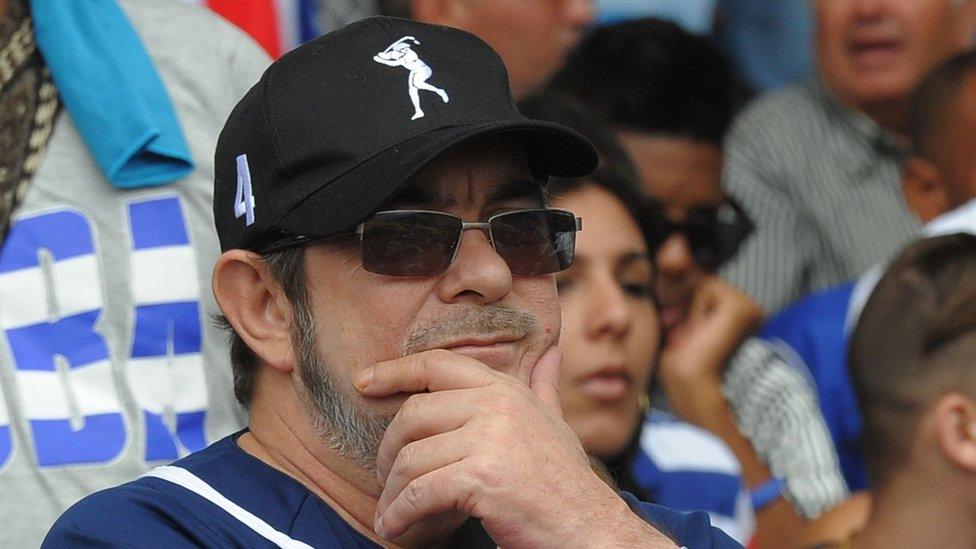The Colombian village where Farc rebels will lay down arms
- Published
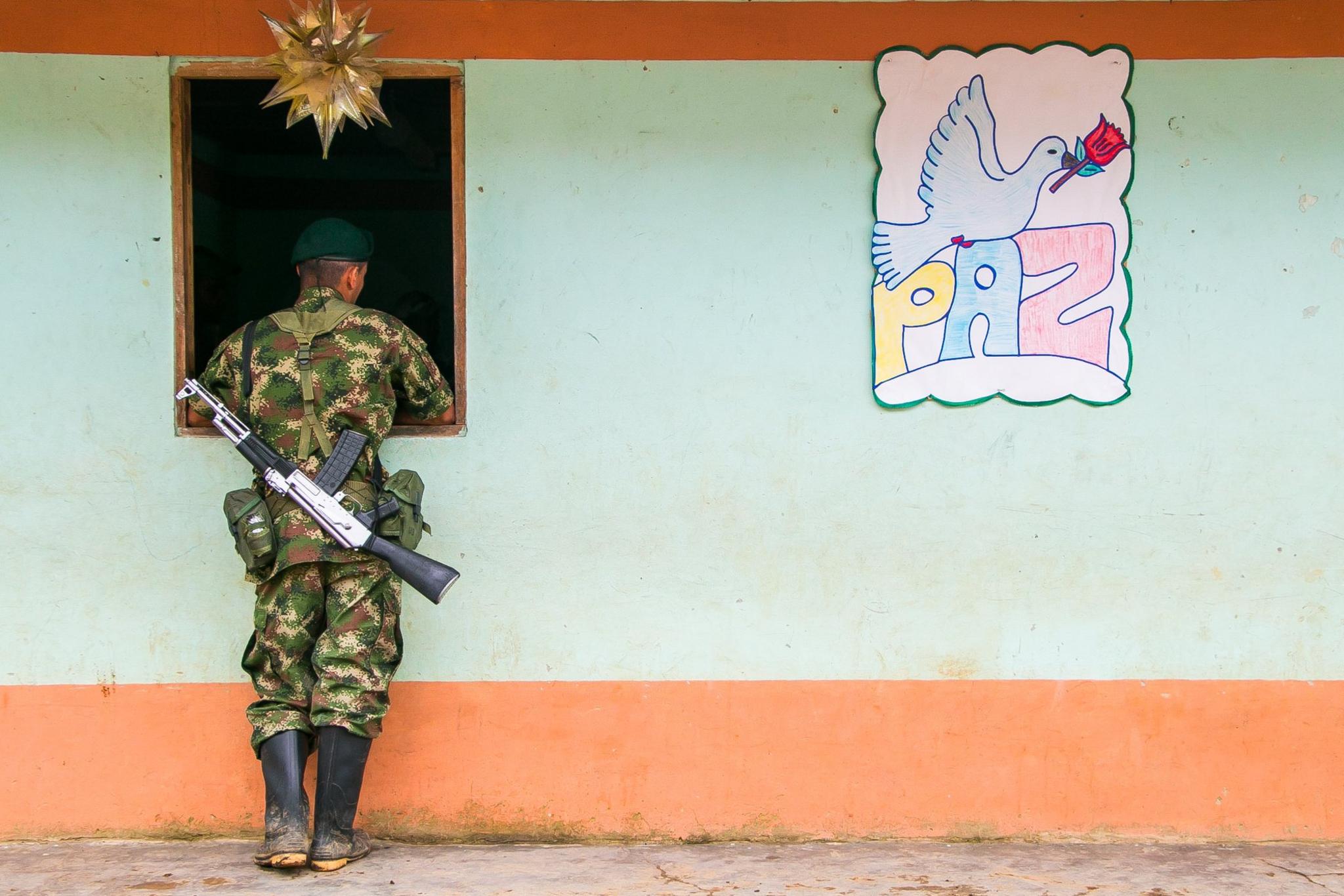
Tucked deep into the Andes, the village of Santa Lucia in the municipality of Ituango has been chosen as one of the 20 "transition zones" where rebels from the left-wing Revolutionary Armed Forces of Colombia (Farc) will disarm after more than 50 years of conflict.
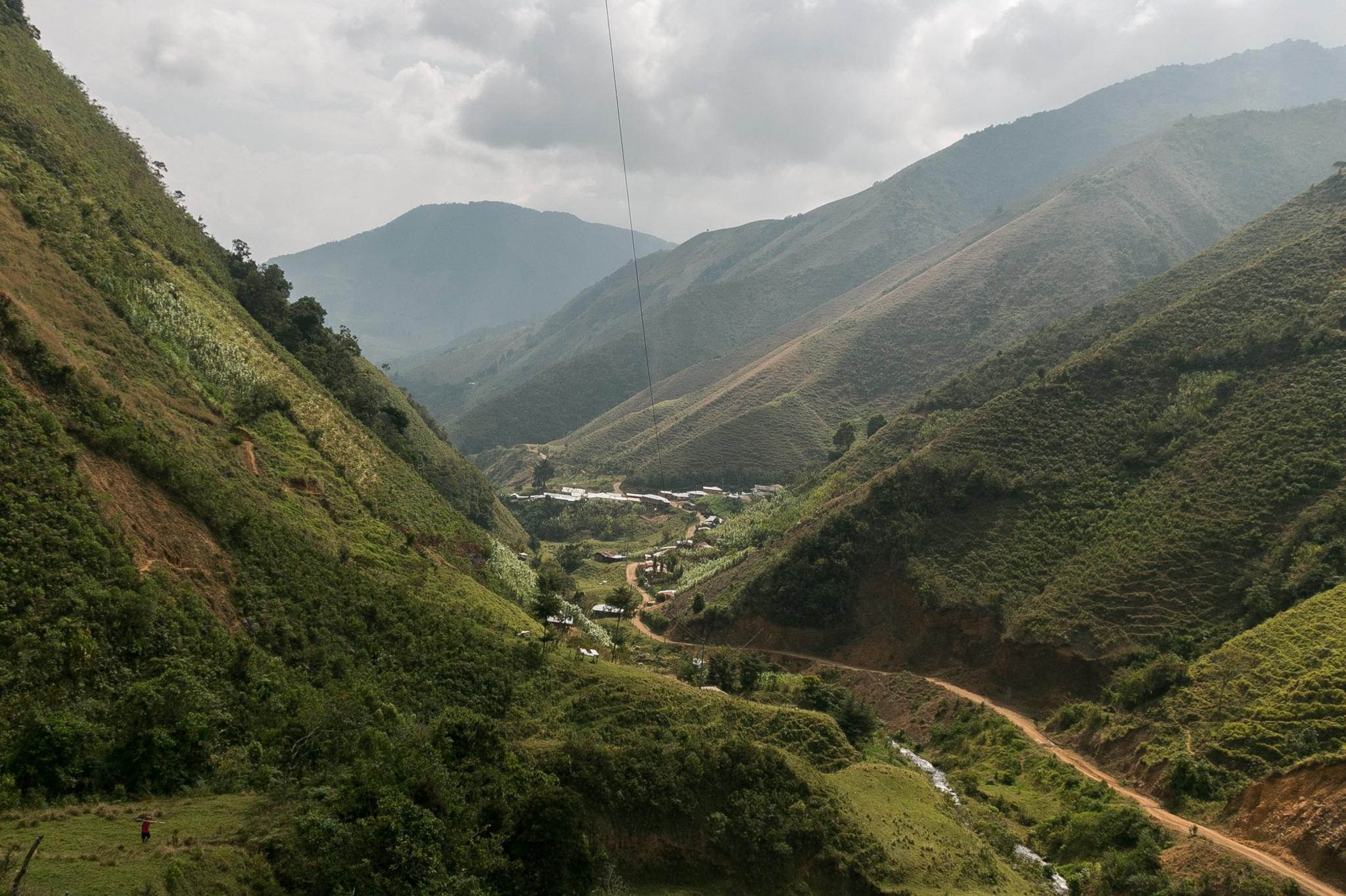
Ituango has been of key strategic importance to the Farc for over 30 years. From this remote and hard-to-access region with hardly any government presence, the rebels have launched attacks on Colombia's Pacific and Caribbean coasts and the Andean mountains and lowlands. The hamlet of Santa Lucia is located four hours north of Ituango at the entrance to a vital mountain corridor.
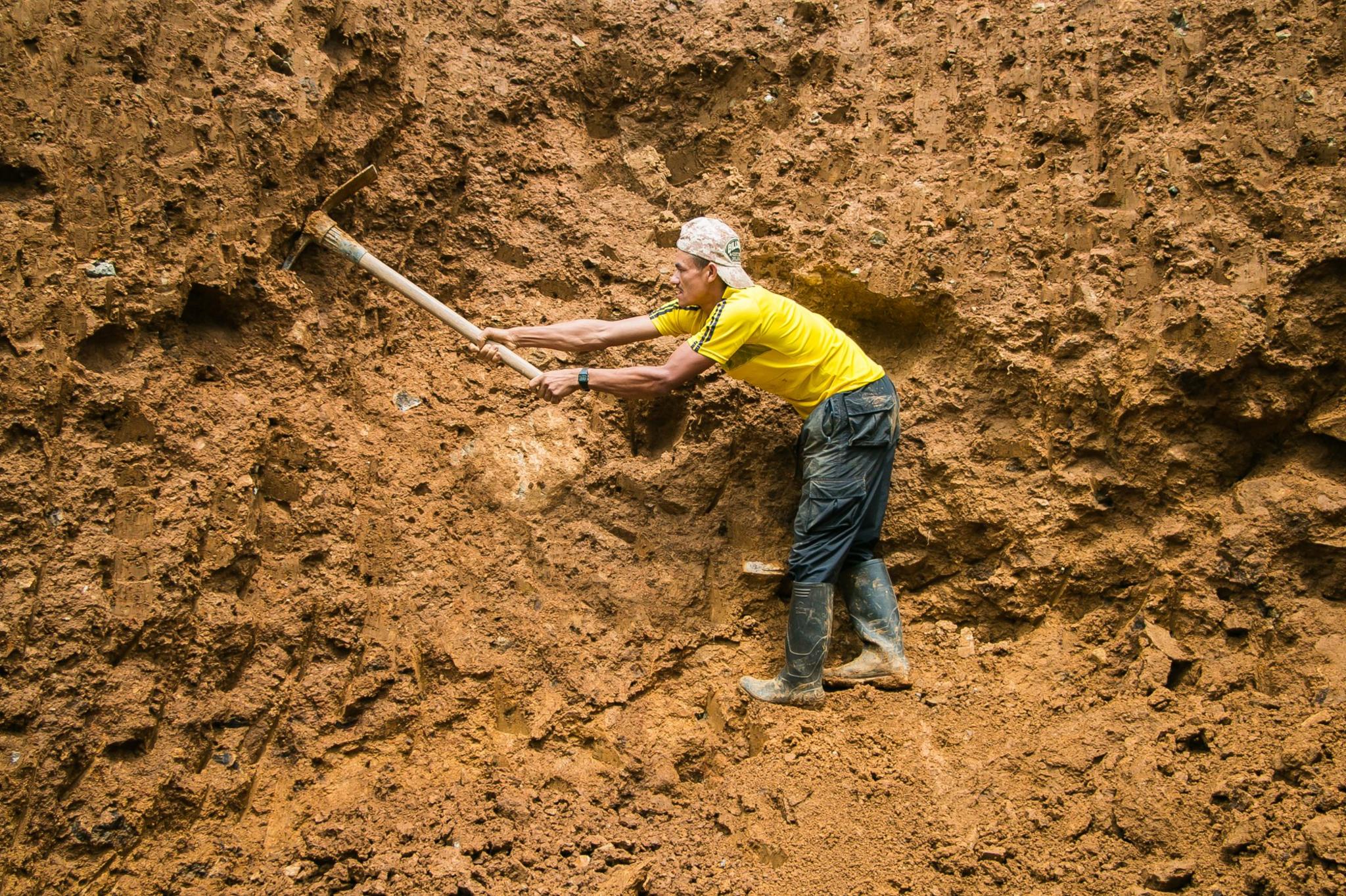
The small community of around 250 people, nearly half of whom are under 18 years of age, has seen dramatic changes in the past few years. Six years ago, Santa Lucia was hooked up to the electricity grid. And more recently, the start of formal peace talks between the Farc and government negotiators in Cuba improved security in the area, allowing for the construction of a dirt road - cutting travel time to the town of Ituango by more than half.
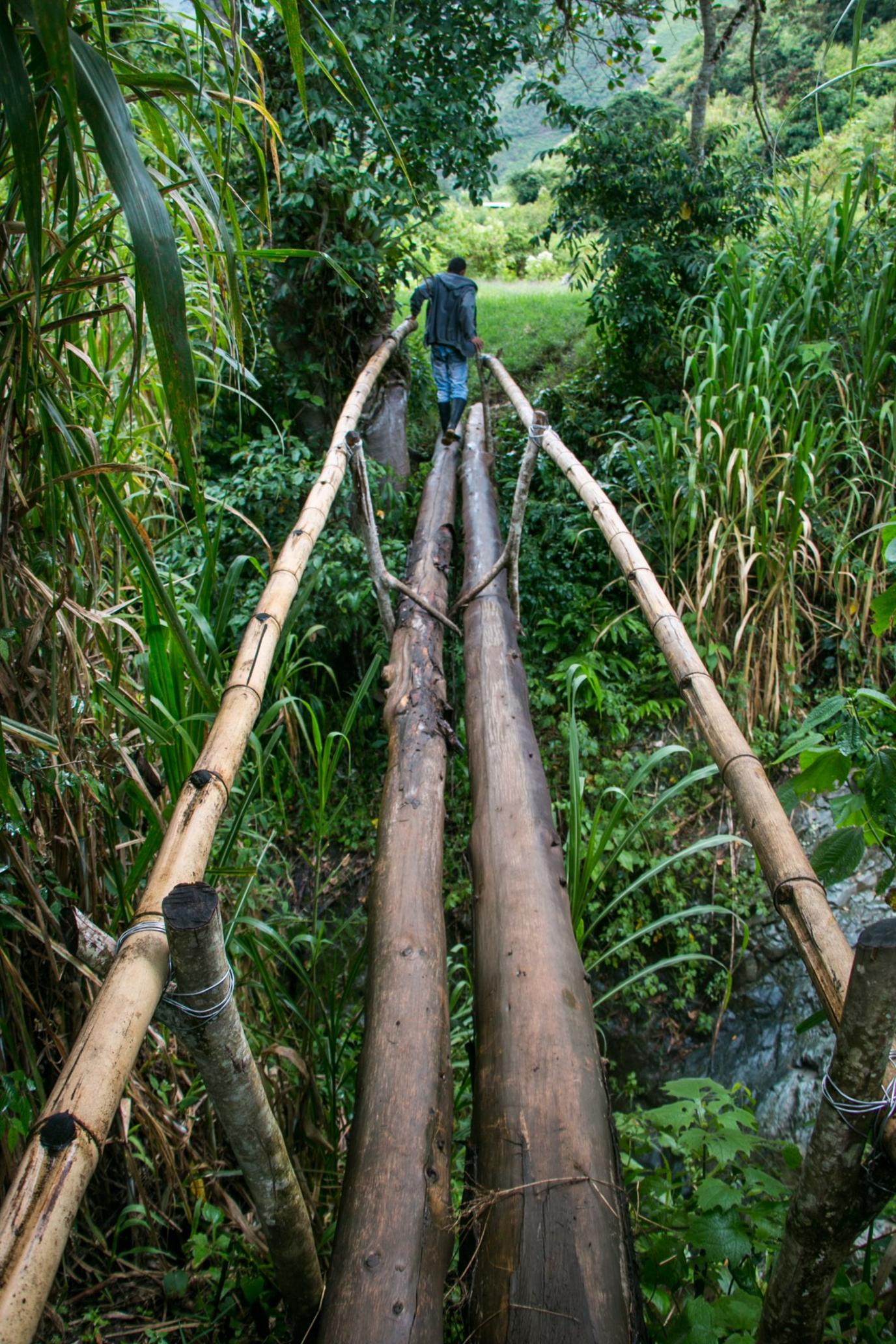
But even after these improvements, many challenges remain. This bridge, which children have to cross to reach school, illustrates many of the area's underlying problems. Only 47% of the municipality of Ituango has electricity, less than half of the area has access to drinking water and only 4% of the area has mobile phone coverage. Santa Lucia resident Luis Villa sums up the problems: “We don’t have a sewage system, health service, rubbish collection, adequate water supply, (or) a community centre. The government needs to provide those for there to be real peace.”

Most of Ituango's farmers grow coffee, corn or beans. But there are some areas where coca, the raw ingredient for cocaine, is also grown. Those who grow it argue that the profits from growing coca, which tend to be much larger than those from growing legal crops, have allowed even the most removed hamlets to develop. They say coca cultivation has provided youth with employment, lifting entire families out of poverty.
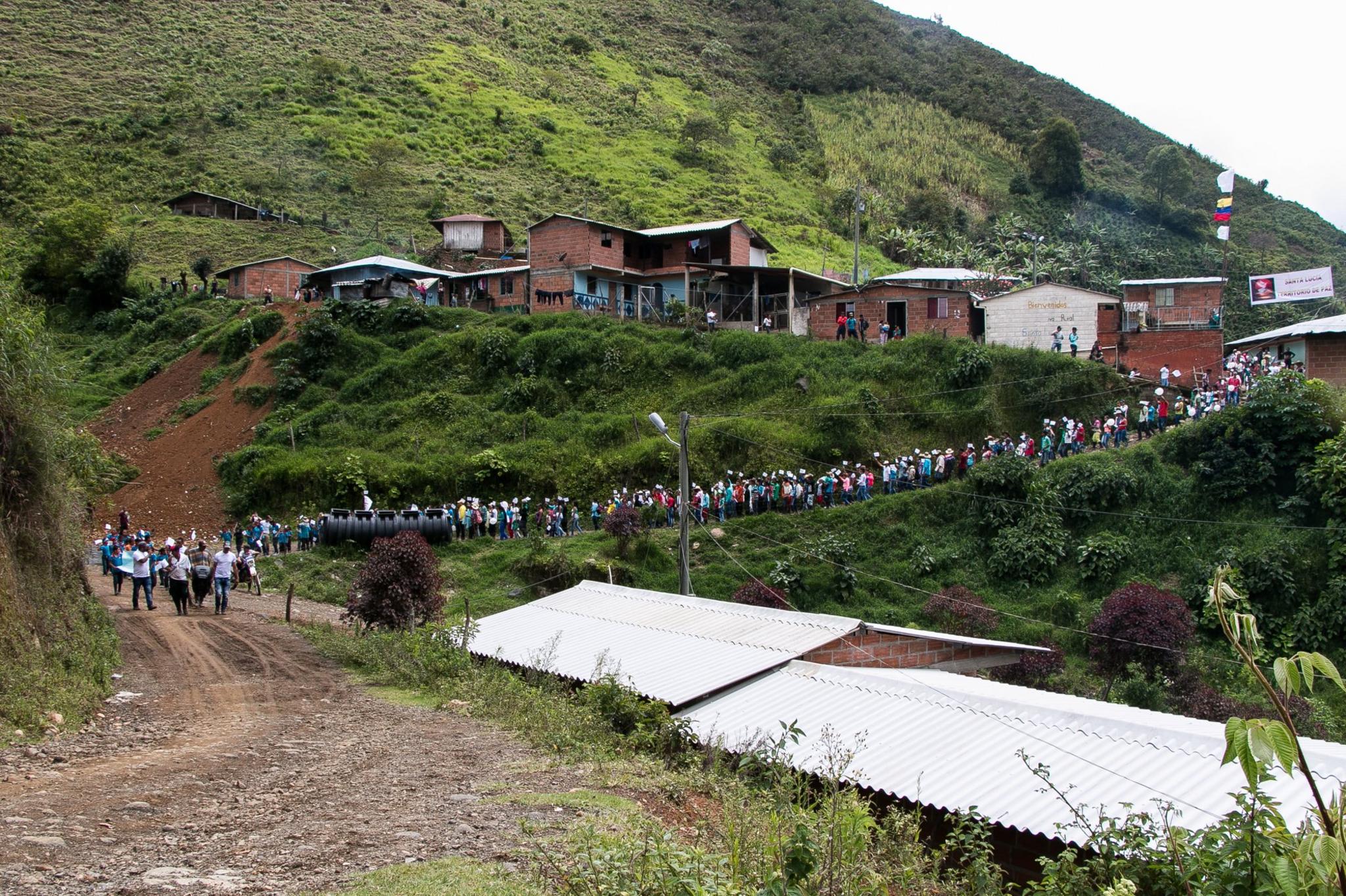
The peace agreement will be put to a popular vote on 2 October. While there are vocal campaigns for both the "no" and the "yes" vote across Colombia, Santa Lucia has come out overwhelmingly in favour of the agreement. Here, local people can be seen taking part in a march in support of the agreement. Residents, who have suffered greatly as a result of the conflict, say they yearn for peace. Some Santa Lucians have mistakenly been suspected of belonging to the Farc and community leaders say they have been subjected to arbitrary arrests by the police. In 2000, the hamlet was burned to the ground by right-wing paramilitaries and its residents have been displaced en masse five times. In the wider municipality of Ituango, more than two-thirds of its 24,000 inhabitants are registered as victims of the conflict. Among them are 237 victims of landmines, which continue to be a massive problem in Colombia.

Santa Lucia’s community has taken advantage of the new road to transport sturdier materials to their village for rebuilding. Luis is expanding his house to turn it into the first restaurant in the village. He is anticipating a rush from the 600 guerrillas who are due to re-integrate into civilian life here. He says people in Santa Lucia have already learned to co-exist with the rebels. "The peace process has already been a bonus for us because it's been a year since there has been fighting; a year since there were any new landmine victims. The Farc are no longer recruiting, so I know my children are safe from the war,” he explains.

At the moment, Santa Lucia’s residents are full of hope. Children have been painting murals in support of peace. Here, they were helped by a Farc guerrilla fighter.
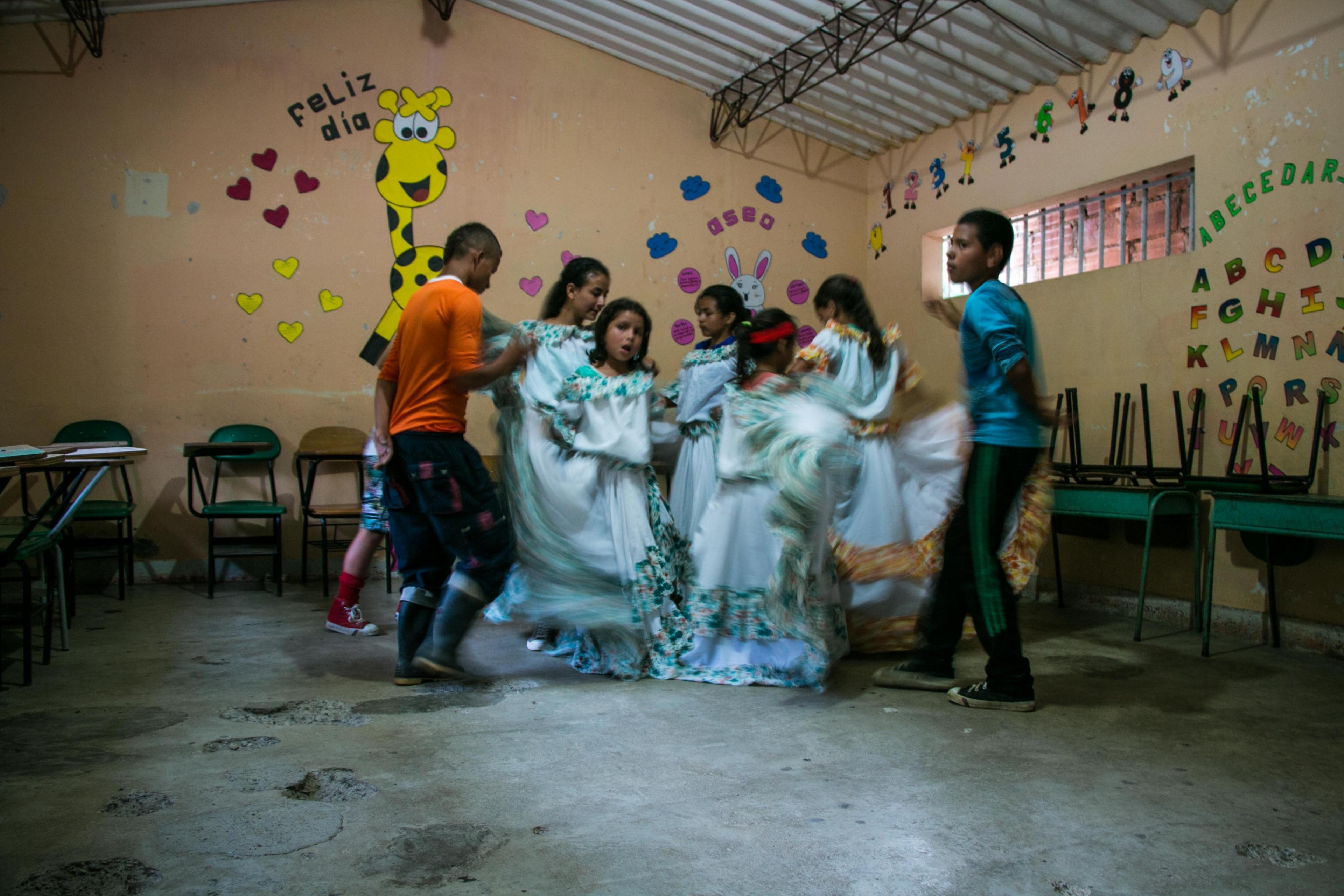
But many fear peace may be fleeting and their children's future may not be as safe as they would hope.

In their monthly gatherings, farmers from Santa Lucia and the surrounding region have talked about their fear that criminal gangs and right-wing groups similar to the paramilitaries who have attacked the village in the past could try to fill the vacuum left by the Farc once the rebels demobilise.

While Colombians have yet to decide on the final agreement in the public vote due on 2 October, Farc guerrilla fighters have already begun to re-integrate into civil society in Santa Lucia by participating in community events.
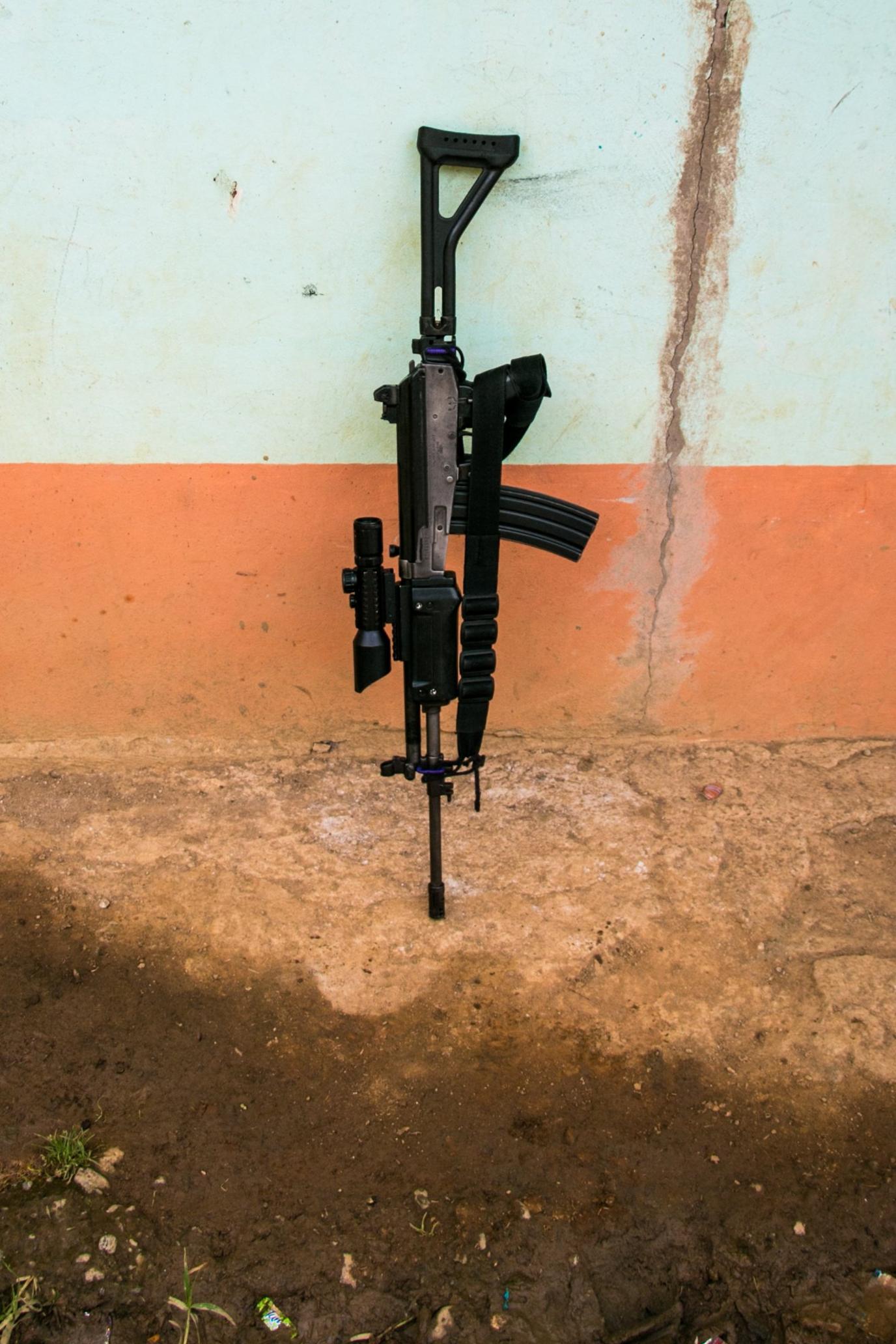
Many in Santa Lucia believe that a lasting peace now depends on the Colombian state and whether it will invest in the transition areas. “I don’t think that the government and the world will stay as interested in Santa Lucia when the 180 days of the mandatory time the guerrillas have to spend in Santa Lucia is up," explains community leader Jhon. "If they don’t, we will go back to the same poverty and there won’t be peace,” he warns. Despite these fears, many in Santa Lucia speak of a new sense of autonomy which they say empowers them to forge their own future after years of fear.
- Published24 November 2016
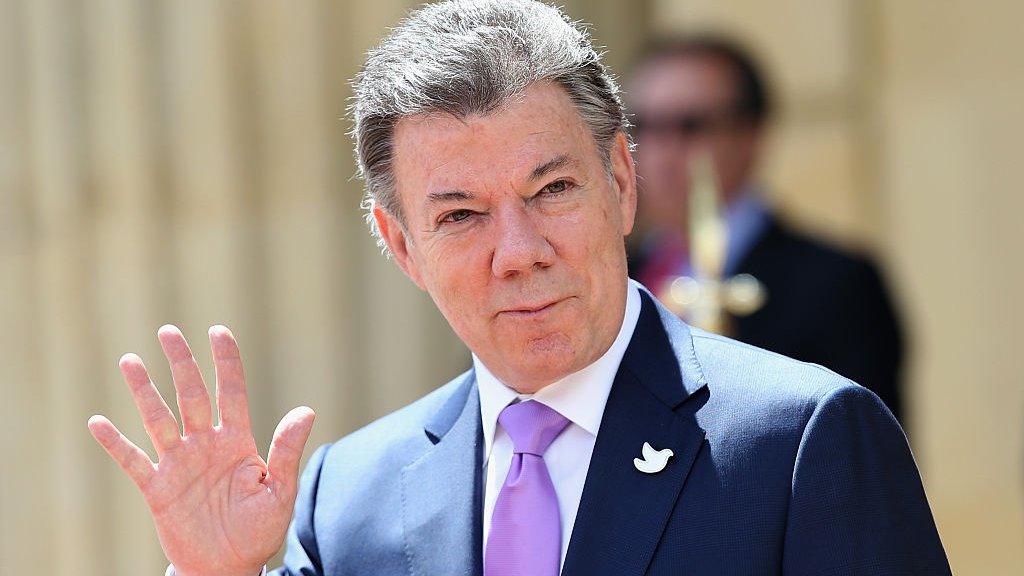
- Published24 November 2016

- Published24 November 2016
